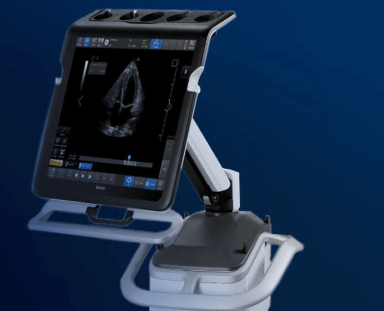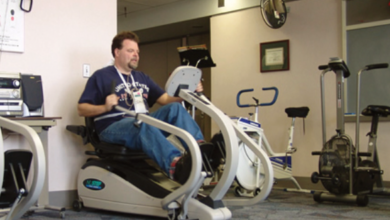The Future of Medical Imaging: Point of Care Ultrasound Technology

Medical imaging has come a long way since the first x-ray was taken in 1895. Today, we have access to advanced technologies that allow us to see inside the human body at an unprecedented level of detail. Among these cutting-edge tools is point of care ultrasound technology – a portable and versatile method for visualizing internal structures using high-frequency sound waves. In this blog post, we’ll explore the exciting potential of point of care ultrasound and its role in shaping the future of medical imaging. So buckle up and get ready to discover how this innovative technology is transforming healthcare!
What is Point of Care Ultrasound Technology?
Point of care ultrasound technology is a type of medical imaging that uses high-frequency sound waves to create images of internal structures in the body. Unlike traditional ultrasound, which often requires patients to visit specialized clinics or hospitals for testing, point of care ultrasound can be performed at the patient’s bedside by a trained healthcare provider.
This innovative technology involves using a small handheld device called an “ultrasound probe” that emits sound waves and captures their reflections as they bounce back from organs and tissues. These reflected echoes are then processed into detailed 2D or 3D images that allow healthcare providers to visualize what’s happening inside the body in real-time.
Point of care ultrasound offers numerous advantages over other types of medical imaging, including its portability, speed, safety, and ease-of-use. Its versatility allows it to be used in various clinical settings such as emergency rooms, operating rooms, intensive care units (ICUs), primary care offices and more. Additionally, Point-of-care ultrasounds have been proving helpful during the Covid-19 pandemic with diagnosis and monitoring progression cases on lung diseases like pneumonia caused by SARS-CoV-2 infections.
Point-of-care ultrasound technology has revolutionized how we approach medical imaging by providing quick and accurate visualizations right at the patient’s bedside without requiring them to move around much while ensuring their safety through no exposure radiation emitting devices at all times during examination.
How is Point of Care Ultrasound Technology Used?
Point of Care Ultrasound (POCUS) technology is used in a variety of medical fields, including emergency medicine, critical care, obstetrics and gynecology, cardiology, and others. POCUS machines are portable and allow healthcare professionals to perform real-time imaging at the bedside.
In emergency medicine settings, POCUS can be used to quickly evaluate patients with trauma or other urgent conditions such as abdominal pain or shortness of breath. In critical care settings, POCUS can help monitor critically ill patients for changes in their condition that may require intervention.
In obstetrics and gynecology, POCUS allows practitioners to assess fetal health during pregnancy and diagnose conditions such as ectopic pregnancy or ovarian cysts. Cardiologists use POCUS to visualize the heart’s function during procedures like cardiac catheterization.
Point of Care Ultrasound has revolutionized how doctors approach patient diagnosis and treatment by allowing them to see inside the body without exposing patients to harmful radiation from traditional X-rays or CT scans.
What are the Benefits of Point of Care Ultrasound Technology?
One of the most significant benefits of point-of-care ultrasound technology is its portability. Unlike traditional ultrasound equipment, which can be bulky and difficult to move between departments or even rooms, point-of-care devices are lightweight and portable.
This means that healthcare professionals can easily take the device directly to a patient’s bedside, allowing them to quickly assess any potential issues without having to move the patient around unnecessarily.
Another advantage of point-of-care ultrasound technology is its speed. Traditional ultrasounds often require patients to wait several hours before receiving their results. With POC ultrasounds, however, healthcare providers can get real-time feedback on a patient’s condition within minutes.
Moreover, these devices are not only fast but also very accurate in detecting various health conditions such as pneumonia or blood clots in different parts of the body.
Last but not least, POC ultrasounds offer cost-effective solutions for both doctors and patients as they decrease hospital stay duration due to quicker diagnosis times leading up to faster treatment plans implementation.
What are the Risks of Point of Care Ultrasound Technology?
While Point of Care Ultrasound (POCUS) technology is a valuable tool for medical professionals, there are still some risks associated with its use. One of the main risks is that inexperienced users may not be able to interpret the images correctly, leading to misdiagnosis or delayed treatment.
Another risk is that excessive use of POCUS can lead to over-reliance on imaging rather than clinical judgment. This could potentially result in unnecessary procedures and increased healthcare costs.
There are also concerns about the potential harm caused by ultrasound waves on developing fetuses during pregnancy. While studies have shown no adverse effects on fetal development when ultrasound is used appropriately, it’s important for healthcare providers to follow guidelines and limit exposure when possible.
There’s a risk of infection if proper sanitation protocols aren’t followed when using POCUS equipment. Healthcare providers must ensure that all equipment is properly cleaned and sterilized between patients to prevent the spread of infections.
While POCUS has many benefits, it’s important for healthcare professionals to be aware of these potential risks and take appropriate measures to mitigate them.
How Effective is Point of Care Ultrasound Technology?
Point of Care Ultrasound technology has been proven to be highly effective in various medical settings. One of the greatest advantages is its ability to provide immediate results with high accuracy, which can help physicians make prompt and informed decisions about patient care.
Point of Care Ultrasound can also reduce the need for more invasive procedures like biopsies or exploratory surgeries, which not only saves time but reduces costs and risks associated with these procedures. In addition, it allows doctors to monitor patients in real-time during critical situations such as cardiac arrests or trauma incidents.
The portability and ease-of-use of Point of Care Ultrasound also make it a valuable tool in remote or emergency settings where access to traditional imaging equipment may be limited. This technology has become increasingly important during the COVID-19 pandemic, where rapid diagnosis and monitoring are crucial.
However, like any medical technology, there are limitations to consider when using Point of Care Ultrasound. It requires proper training and skill from healthcare professionals who operate it because incorrect usage may lead to inaccurate diagnoses or missed abnormalities.
Point of Care Ultrasound is an effective diagnostic tool that provides quick results with high accuracy rates while reducing costs and the need for more invasive procedures. Its increasing accessibility makes it a promising solution for improving patient outcomes across various specialties in medicine.
Conclusion
Point of care ultrasound technology is quickly becoming an essential tool in modern medical practice. Its portability and ease of use make it a valuable diagnostic tool for healthcare providers both inside and outside of the hospital setting.
Point-of-care ultrasound has proven to be highly effective in diagnosing patients with different types of conditions, such as heart disease, lung infections, and pregnancy-related issues. With its ability to generate real-time images that can aid clinicians in making quick decisions about treatment plans, it’s no wonder that more and more healthcare providers are adopting this technology.
While there are some risks associated with the use of point-of-care ultrasound technology, including potential misdiagnosis or over-reliance on imaging results alone, these concerns can be mitigated by ensuring proper training for users and adherence to established protocols.
As the future continues to unfold before us at an unprecedented pace, one thing is certain: Point-of-care ultrasound will continue to play a crucial role in medicine. As we move forward into this exciting new era of technological advancement within healthcare fields like radiology or cardiology among others-where fast diagnoses are paramount-points-of-care ultrasounds will undoubtedly become even more ubiquitous tools for early diagnosis leading to better patient outcomes.




